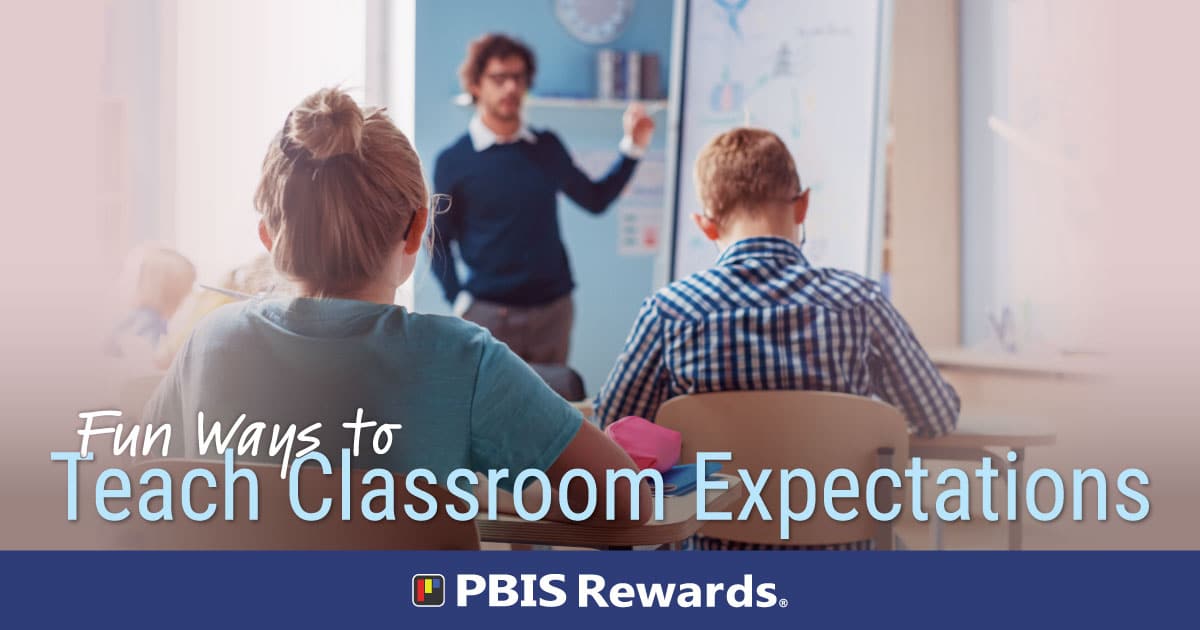The beginning of a new school year is exhilarating. Teachers and students alike have had a few weeks off to rest and recharge in preparation for a new season of teaching and learning. In the first few weeks, teachers often review and assess student knowledge as a precursor to the new years’ learning. It’s also a prime time for teaching classroom expectations, rules, and routines. The success of the entire school year can often be traced to the first day.
Many of us remember a teacher standing in front of the classroom on the first day, handing down classroom rules. There was typically very little follow-up beyond that first day, often in the form of harsh reminders. Fortunately, in the era of SEL and PBIS, teaching classroom expectations is an important part of the entire educational process. And, you can make it fun!
Why Teach Classroom Expectations
One of the best ways to make sure your students understand classroom rules and routines is to involve them in the learning process. It’s not enough to simply state classroom rules and expect students to recall them. Making those rules and expectations “sticky” takes a little effort and imagination, but the rewards are well worth it.
Teachers who involve their students in fun exercises designed to teach expectations often have a more focused, involved classroom. As an added bonus, teaching routines can create additional instructional time by helping to manage everyday activities in an efficient manner.
How to Teach Classroom Expectations – With Fun
There are numerous ways to engage your students in learning classroom expectations. Depending on the grade level, you can teach classroom expectations by:
Modeling
Demonstrating what an expectation looks like in action helps students to understand classroom processes and procedures. You can help cement this understanding by purposely modeling behaviors incorrectly and challenging your students to spot the inconsistencies. Students love to catch their teacher doing something “wrong” and will be glad to point it out!
Role Play
Get your students more deeply involved in learning classroom expectations by having them to act out different scenarios. You can play your role as the teacher, ask your role-playing students to do things correctly or incorrectly, and let the rest of the class decide what is right or wrong. Or, you can remove yourself entirely from the role-play scenario and let another student play teacher – you might even find some humor in the way your student “teacher” decides to portray you!
Story Time
Very young students love storytime and there are lots of age-appropriate books that can help you teach expectations in this way. Storytime typically creates a relaxed atmosphere, which can make it easier for students to absorb the lesson.
Gamification
Students love to play games, and you can make learning your classroom expectations fun by turning them into a game. There are plenty of options for games, including classics such as tic-tac-toe and bingo. You can also adapt standard board games to fit your needs. For tech-savvy older students, take the games digital and engage them with a wild goose chase.
When to Teach Classroom Expectations
Behavior inside and out of the classroom can be consistently positive when you devote time to teaching expectations. The beginning of the new school year is ideal for communicating what your expectations are and connecting them with the schoolwide PBIS matrix. When your classroom behavior matrix aligns with your schoolwide matrix, your students can build positive behaviors that will benefit them in every situation.
Even as classroom routines and behavior expectations become ingrained in your students, you may find that these behaviors can fall by the wayside as the school year progresses. When this happens, you can put your lesson plans on hold and spend a little time reteaching expectations. When it comes to classroom management, taking a few minutes for review can help you to maintain the momentum you have built since the beginning of the school year.
For schools using PBIS Rewards, reinforcing positive behaviors by awarding points is simple. Just scan a student ID in the mobile app or use the desktop app. PBIS Rewards takes a cumbersome part of a PBIS initiative – using paper tickets or tokens – and makes it digital. Teachers can focus their energy on teaching classroom expectations and let our software keep track of points awarded. Students can receive points from any staff member in the school, and the points are tracked in a central account for each student. When the time comes to visit the school store, every point is there for them to spend. No need to reissue tickets and no questioning the accuracy of points balances.
For a more in-depth look at how PBIS Rewards can help your staff concentrate on teaching classroom expectations, request a demo!
Request a Demo

